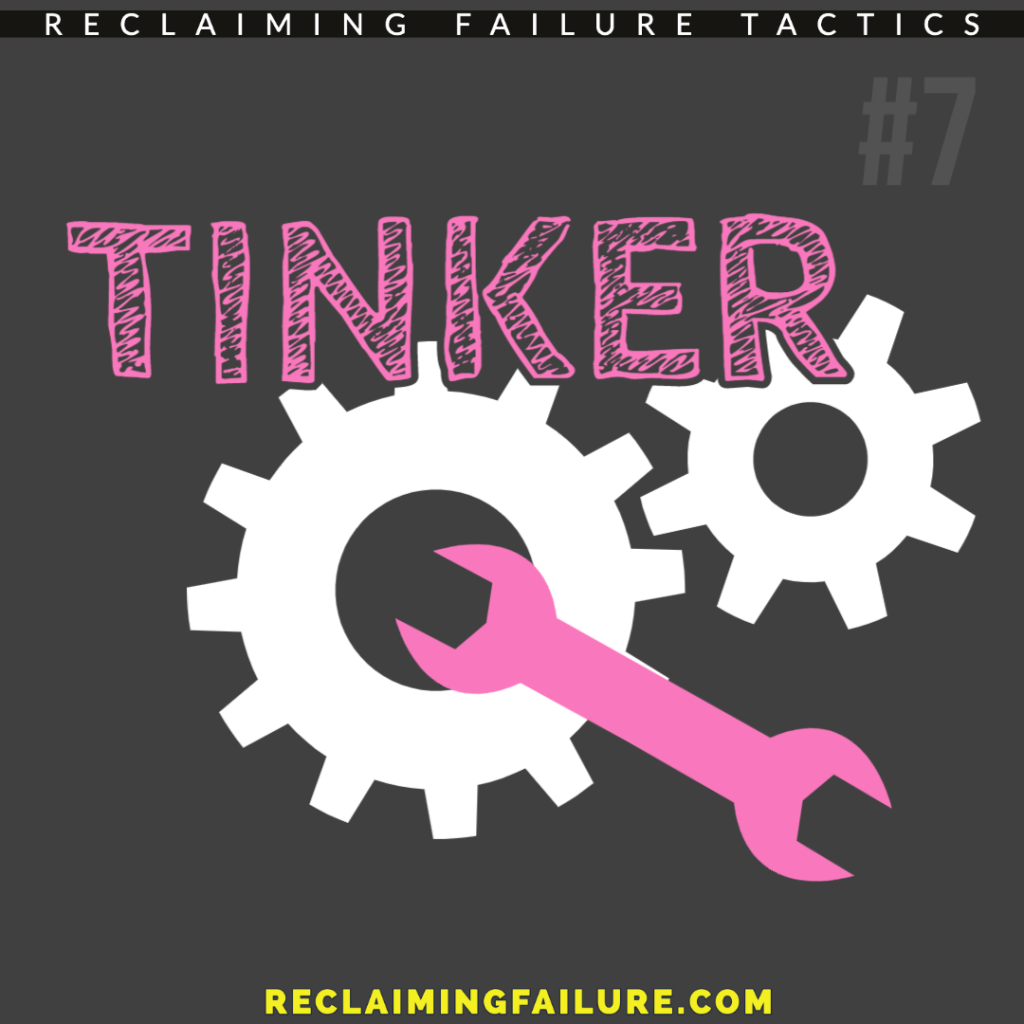
Contact Me
Most Recent Blog Posts
05/16/2024
ChatGPT and the Educational Pump Fake
05/25/2023
On Failure...
05/16/2023
An Ode to the GOAT (of Failure)
02/12/2021
Failure Judo: Take Time to Recover
07/31/2020
Failure Judo: Build Community
07/30/2020
Failure Judo: Discuss
07/29/2020
Failure Judo: Be Meta
07/28/2020
Failure Judo: Tinker
07/27/2020
Failure Judo: Practice
07/26/2020
Failure Judo: Reframe the Experience
07/25/2020
Failure Judo: Manage Loss
07/24/2020
Failure Judo: Take Incremental Steps
07/23/2020
Failure Judo: Fail on Furpose
07/22/2020
Failure Judo: Visualize Failure
07/21/2020
Failure Judo: 11 Tools to Make Failure Work for You.
07/20/2020
Perseverance Isn’t Enough.
02/05/2020
Why You Should Try New Things
01/09/2020
Piaget and Failure…
01/04/2020
The Value of Struggle
01/02/2020
The Fear of Failure
11/16/2019
Why Failure Beats Practice Alone
11/14/2019
Reclaiming Failure Tactic: Visualization
11/05/2019
Legos, the Process, and Failure
10/30/2019
Fail First, Succeed Later
10/25/2019
Failure... Like Riding a Bike
10/24/2019
Michael Jordan: Faiure
10/23/2019
Pole Vaulting - A Journey of Failure
10/18/2019
Failure Judo: Tinker
07/27/2020
Part 7 of the Failure Judo Series
Hands down, the best way to learn how something works is through a process I like to call tinkering. “Tinkering” is an ability we are all born with, but it is taken away from us as we grow older by nervous adults and other authority figures who are worried about breaking things or messing things up, and through shame and bad logic, pass those worries on to us.
Sometimes called “hands on learning” or “experiential learning”, tinkering allows us to explore, try things out, and see connections between parts. We learn about the thing we are tinkering with, but we also learn a myriad of other things – how to use our hands, tools, and properties of different materials. In science, the term “scientific method” is used to make tinkering sound like something educated people do and to make it ok, but the process is the same: Ask a question, form a hypothesis, test hypothesis, repeat.
Babies do almost all of their learning through tinkering. They grab things, eat things, touch things, push and pull, slap and pound. They develop a basic understanding of the world by interacting with it, which is much more useful and efficient than the adult method: Think about it, stare at it with trepidation, and then ask if anyone knows the right answer.
I’d like to encourage us all to embrace failure in this specific way. Get your hands dirty, and play with things. Take them apart and put them back together. I’m not suggesting that you do something dangerous or cause permanent, irreversible damage. However, there is a definite time for tinkering. I used to let my kids take apart old TVs or electronic components when they stopped working, just so they could use the tools and see how everything worked. The principle here is that we should try to tinker with things whenever we can reduce the cost of failure to very little, or lost zero — It’s a great way to learn and sharpen your skills.
Another example of tinkering that I use is in programming. While I do some professional software development, when I am trying to learn a new technique, I often test it by creating a game or “just for fun” app. There is no pressure that way, and I get a good feel for the new tool or technique before I have to use it in the “real world”.
The next time you are faced with something new, I encourage you to think about how you can tinker with it — remove the fear of failure, and play with it. Engage in some purposeful messing around. I think you’ll be happy you did.
Part 7 of the Failure Judo Series